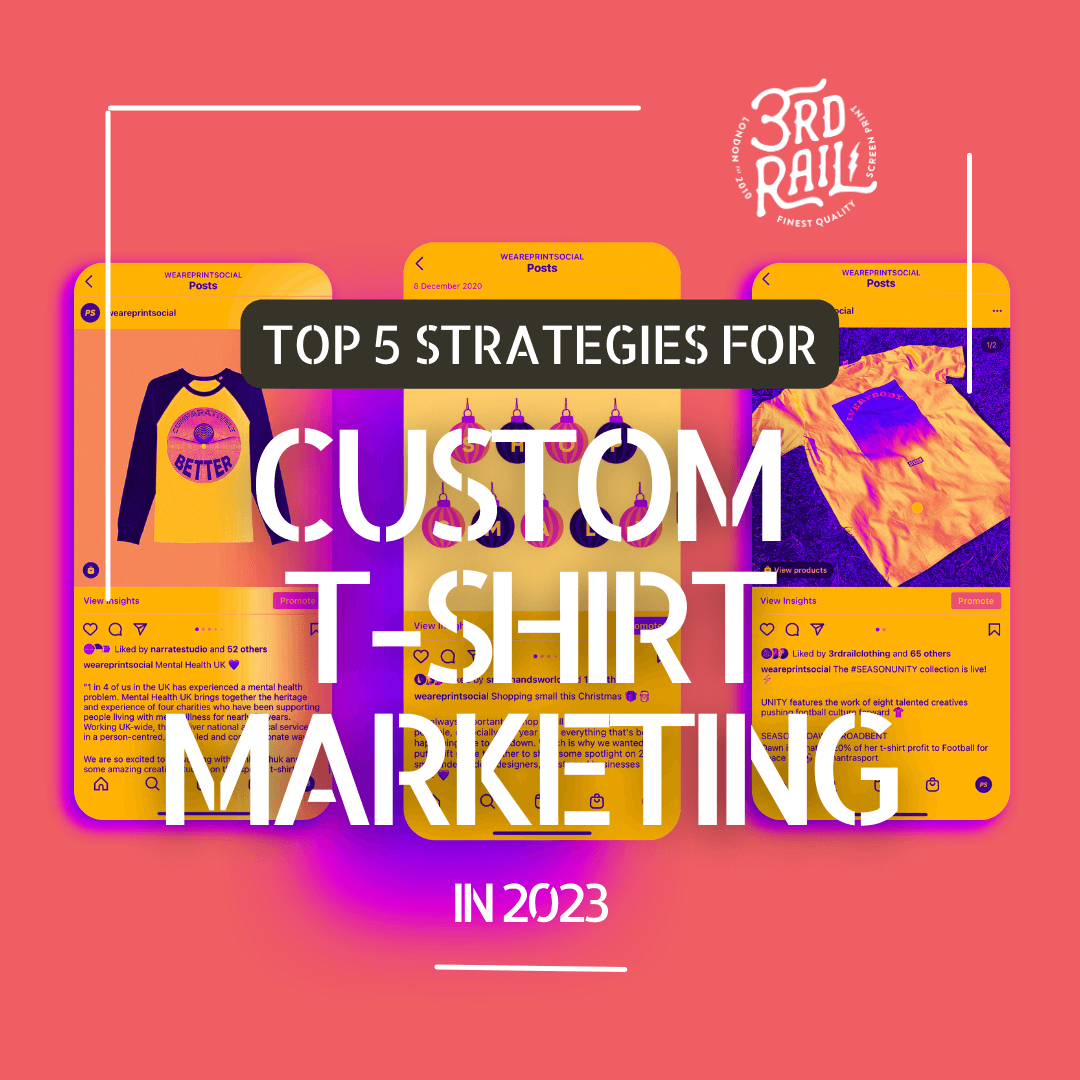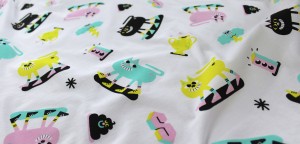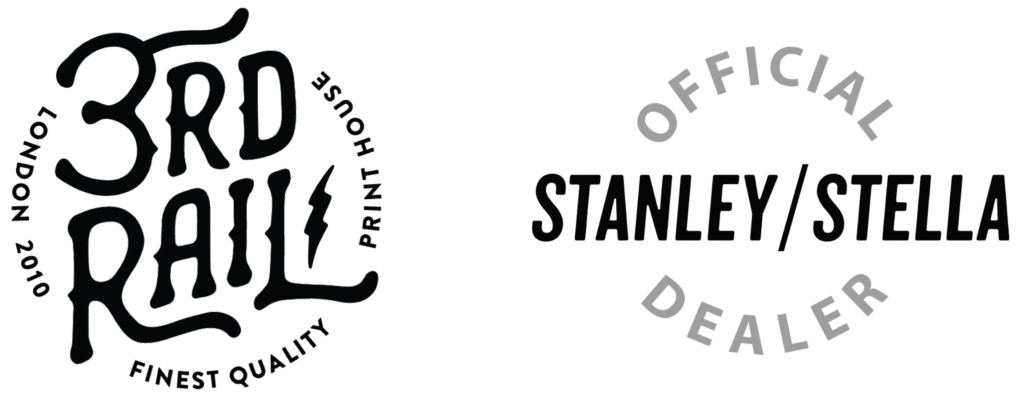Custom t-shirt marketing stands out as a dynamic arena where creativity meets strategy. As t-shirts continue to be a staple in wardrobes worldwide, the art of effectively marketing these custom pieces has evolved, adapting to the ever-changing digital landscape.
Whether you’re a budding entrepreneur or an established brand, mastering the nuances of custom t-shirt marketing is crucial to ensuring your designs don’t just look good but also reach the right audience. Dive into our quick guide as we unravel the top strategies and insights for 2023, tailored to elevate your custom t-shirt marketing game.
| Marketing Strategy | Description | Ideal For |
| 1. Social Media Marketing | Utilising platforms like Instagram, Facebook, and Twitter to reach your audience | Brands with a strong social media presence |
| 2. Influencer Partnerships | Collaborating with influencers to promote your products | Brands targeting a younger demographic |
| 3. Email Marketing | Sending promotional emails to your subscriber list | Brands with a large email list |
| 4. SEO | Optimising your website to rank higher in search engine results | Brands with a strong online presence |
| 5. Paid Advertising | Using paid ads on platforms like Google AdWords or Facebook Ads | Brands with a marketing budget |
1. Social Media Marketing
In today’s digital age, platforms like Instagram, Facebook, and Twitter are indispensable for marketing custom t-shirts. They offer a visual medium perfect for showcasing your unique designs. Beyond traditional platforms, services like Print Social provide a dedicated space for creators to share and sell their custom t-shirt designs, further amplifying their reach.
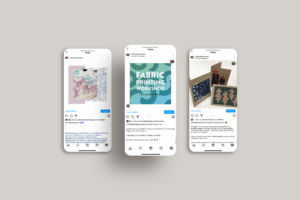
-
- Strategy: Use high-quality images and engaging captions. Create interactive content like polls, quizzes, and stories to engage your audience.
- Selling Directly: Platforms like Instagram now offer “Shop” features, allowing users to purchase directly. Similarly, Print Social offers a streamlined process for customers to buy your designs.
- Case Study: Thumbs leverages Instagram not just to display their designs but also to engage with their community, announce new collections, and gather feedback.
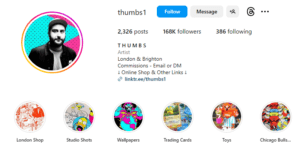
2. Influencer Partnerships
Tapping into the follower base of influencers can skyrocket your brand’s visibility. Especially if you’re aiming at younger audiences, influencers can provide authenticity to your brand.
- Strategy: Choose influencers whose audience aligns with your target demographic. Ensure the collaboration feels organic and genuine.
- Engagement Boost: Collaborative giveaways or contests can drive engagement.

3. Email Marketing
Despite the rise of various marketing channels, email remains a direct and personal way to communicate with your audience.
- Strategy: Segment your email list to send targeted campaigns. Use catchy subject lines and integrate visually appealing graphics.
- Engagement Tips: Incorporate exclusive offers for subscribers or early access to new designs.

4. SEO (Search Engine Optimization)
Optimising your online store or website for search engines ensures that potential customers find you when they search for related products.
- Strategy: Use relevant keywords in product descriptions, meta descriptions, and blog content. Ensure your website is mobile-friendly and has a fast loading speed.
- Content: Regularly update your blog with content related to t-shirt designs, fashion tips, and more to drive organic traffic.
- Case Study: ASOS, a global fashion giant, prioritises SEO, ensuring that their vast product range is easily discoverable through search engines.
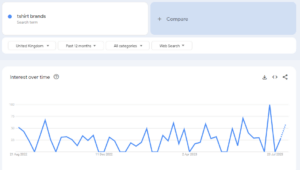
5. Paid Advertising
While organic reach is essential, paid advertising can amplify your reach, targeting specific demographics, interests, or locations. This can be a tactic to consider once your product has gained a little traction.
- Strategy: Use visually captivating ads with clear CTAs (call to action). A/B test different ad copies and images to see what resonates best with your audience.
- Platforms: Depending on your audience, choose between Google AdWords, Facebook Ads, Instagram sponsored posts, or even Pinterest ads.
- Case Study: Nike, a global sportswear brand, strategically uses paid ads, especially during product launches or major sports events, ensuring they capture the attention of their target audience.
Navigating the world of custom t-shirt marketing offers endless possibilities, from the visual appeal of social media to strategic influencer collaborations. The key lies in understanding your audience and selecting the optimal marketing blend. As trends evolve, staying adaptable and fostering genuine connections will ensure your designs resonate and thrive. Cheers to impactful campaigns and your designs taking center stage!
This article is part 3 of a 3-part series on custom t-shirt design brought to you by 3rd Rail. Thank you for joining us on this journey, and we hope you found the series informative and inspiring. Contact us.
Frequently Asked Questions: Custom T-Shirt Marketing
- Which social media platform is best for marketing custom t-shirts? While all platforms have their merits, Instagram, with its visual-centric approach, is particularly effective for showcasing custom t-shirt designs.
- How do I choose the right influencer for my t-shirt brand? Identify influencers whose audience aligns with your target demographic and whose style resonates with your brand’s ethos. Ensure collaborations feel genuine to maintain authenticity.
- Are email marketing campaigns still effective? Absolutely! While there are numerous marketing channels available, email remains a direct and personal way to engage with your audience, especially when offering exclusive deals or updates.
- How often should I update my website’s content for SEO? Regular content updates signal to search engines that your website is active and relevant. Consider adding new blog posts, product updates, or customer reviews at least once a month.
- What’s the advantage of paid advertising for my custom t-shirt brand? Paid advertising allows you to target specific demographics, interests, or locations, ensuring your brand reaches the right audience. It’s especially useful for product launches or special promotions.
- Is there a specific marketing strategy that works best for custom t-shirts? The best strategy often combines multiple approaches. For instance, using social media to showcase designs, influencers to broaden reach, and SEO to drive organic traffic can be a potent mix.
- How do I measure the success of my marketing efforts? Utilise analytics tools available on platforms like Google Analytics, Instagram Insights, or Facebook Business Suite to track metrics like engagement, click-through rates, and conversions.

